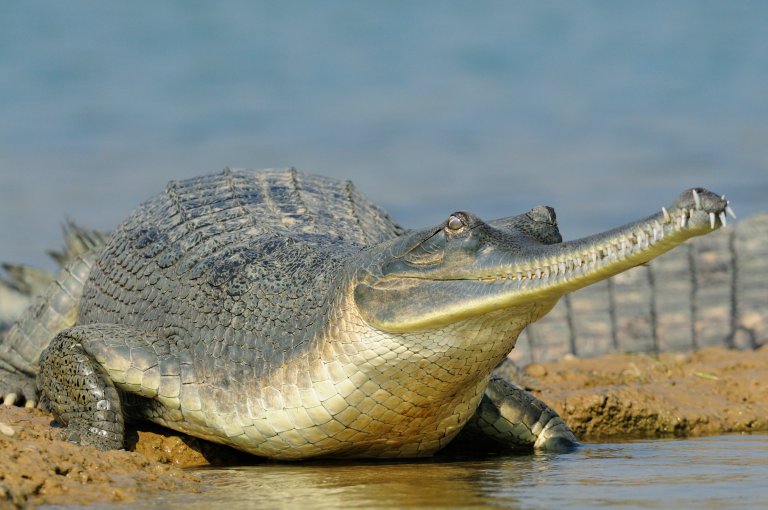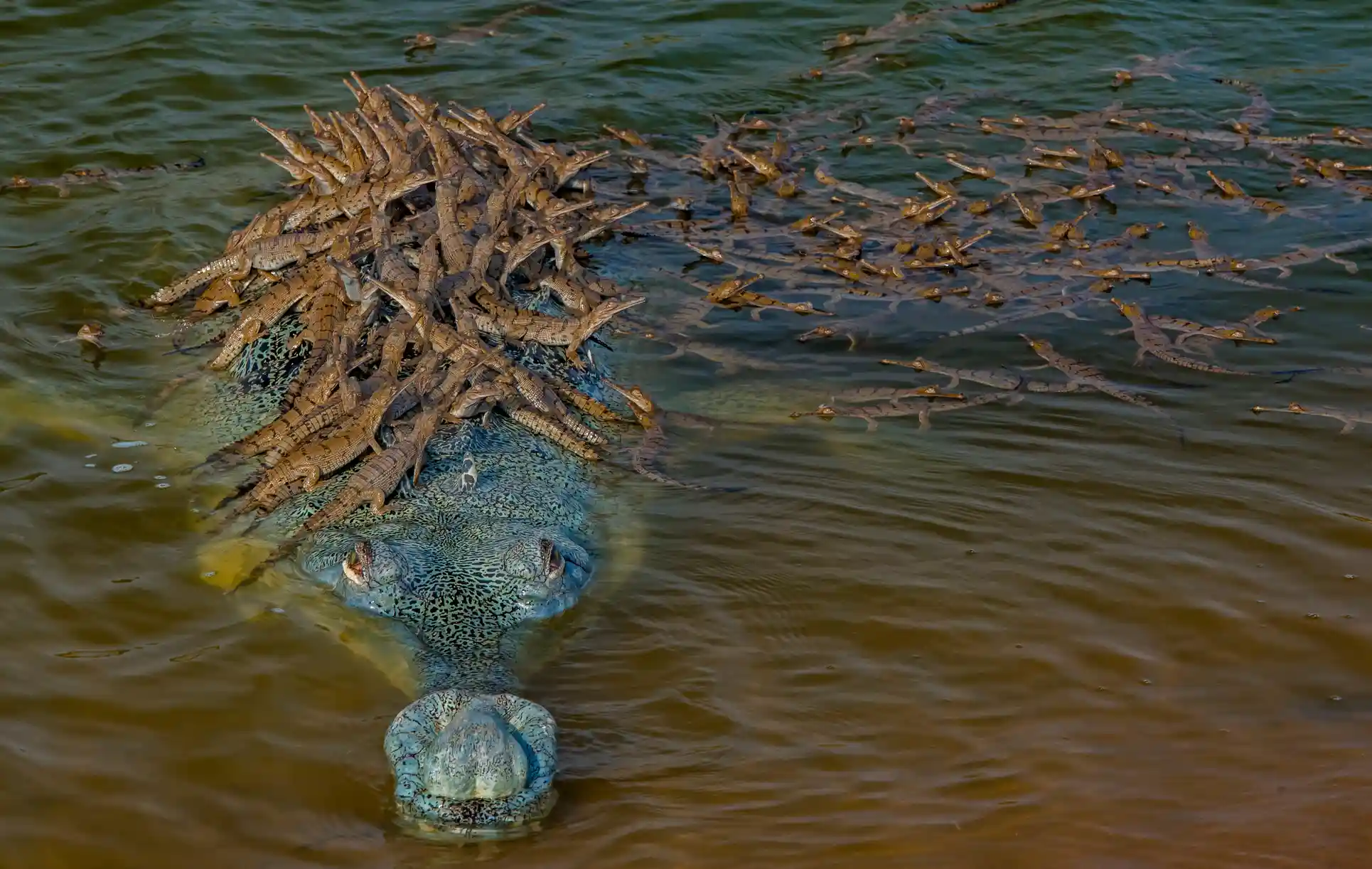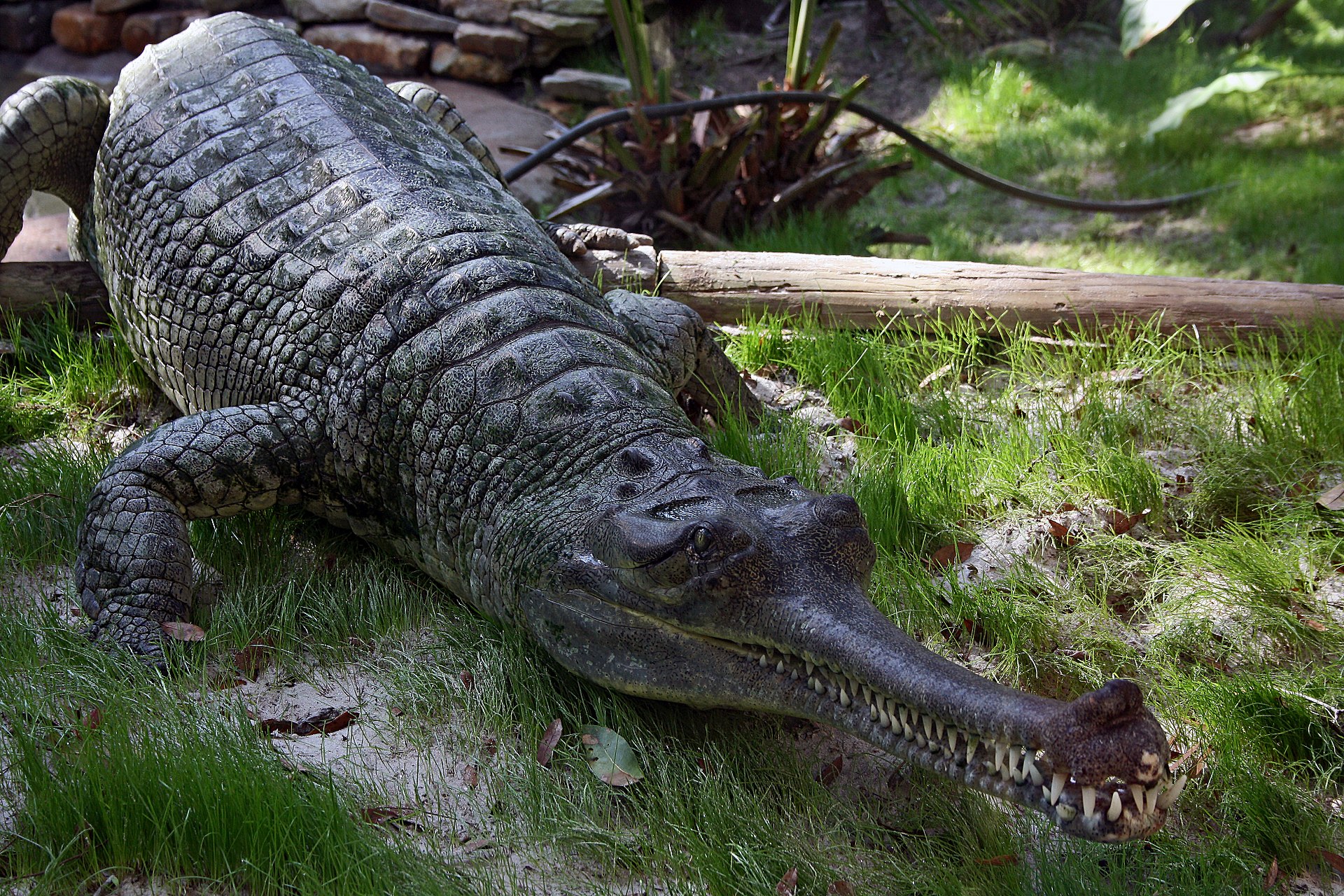By Fanis Michalakis,
When we think of crocodilians, as the name suggests, we tend to think about crocodiles and alligators. However, there exists another member, which does not receive the spotlight like the others. Despite being the second largest crocodilian today with a length of up to 5 meters and a unique appearance that looks like a crocodile, but not entirely, the Gharial is a bizarre-looking animal.
They get their name from the bulbous growth on top of their snout, which resembles an Indian pot called “ghara”. They use this organ to produce sound and air bubbles underwater for their mating ritual. Another key trait is their snout itself, which is narrower than the rest of the crocodilians, with large interlocking teeth. However, they share some traits with the other members of the family, like the plate-like scales that cover the entire body, the eyes positioned on the top of the head, and the general body shape. All crocodilians have their eyes and nostrils at the top of their head so they can breathe and observe their surroundings for long periods of time while keeping the rest of the body under the surface and not scaring away potential prey. Speaking of their eyes, the gharial has them closer together and facing more forward than crocodiles and alligators, meaning that they can see more 3D which allows them to detect prey better and estimate their relative distance. The gharial also has a third translucent membrane on its eyes that allows them to see clearly underwater.
When we think of crocodilians, we think of them as animals that spend their time on the water. That being said, we know that they are capable of covering distances on land and can sometimes run and chase away animals trying to steal eggs or enter their territory. Gharials are the exception to this rule. Unlike the other crocodilians, the gharial does not have strong hind legs that help them support their body and move on land. This is why they only go out of the water to bask or lay their eggs.

The Gharial has a specialized diet, comprising, mostly, fish. This is why their snout is so slender and their teeth so sharp to maximize their catching efficiency and, once they have caught their prey, their interlocking teeth prevent it from escaping. Apart from fish, they can also eat seabirds if the opportunity presents itself.
Despite their reputations as wild animals and savage predators, crocodilians are caring mothers. They defend their nests from potential predators and protect their babies when they are young. They even carry their babies from the nest to the riverbank in their mouths. As we have already discussed, the snout of the gharial is too slim and the teeth are too big for the babies to be carried by their mother. As such, the babies crawl on their own but stay close to their mothers until they are big enough to defend themselves against predators. Like many other animals, gharials are polygynous, meaning that they live in groups comprising one male and a harem. The male marks its territory and defends it fiercely from usurpers.

Since 2017, Gharials are classified as “Critically Endangered” in the IUCN Red List, with less than 1,000 mature individuals and heavily fragmented populations, which makes them more susceptible to extinction. Their main threats are the disturbance of their ecosystems by agriculture, mining, and fishing, which decreases their prey abundance, and the creation of dams. Still, their population seems to be increasing and the mature individuals do not decline in numbers, giving hope for the recovery of the species. To help that cause, organizations for the conservation of the gharial have started many projects, including the reintroduction of individuals to their natural habitat, which leads to an increase in population, ex-situ conservation, usually in zoos, protecting its habitats, and education programs.
References
- Gharial. a-z-animals.com. Available here
- Gharial. animalia.bio. Available here
- IUCN Red List. iucnredlist.org. Available here




